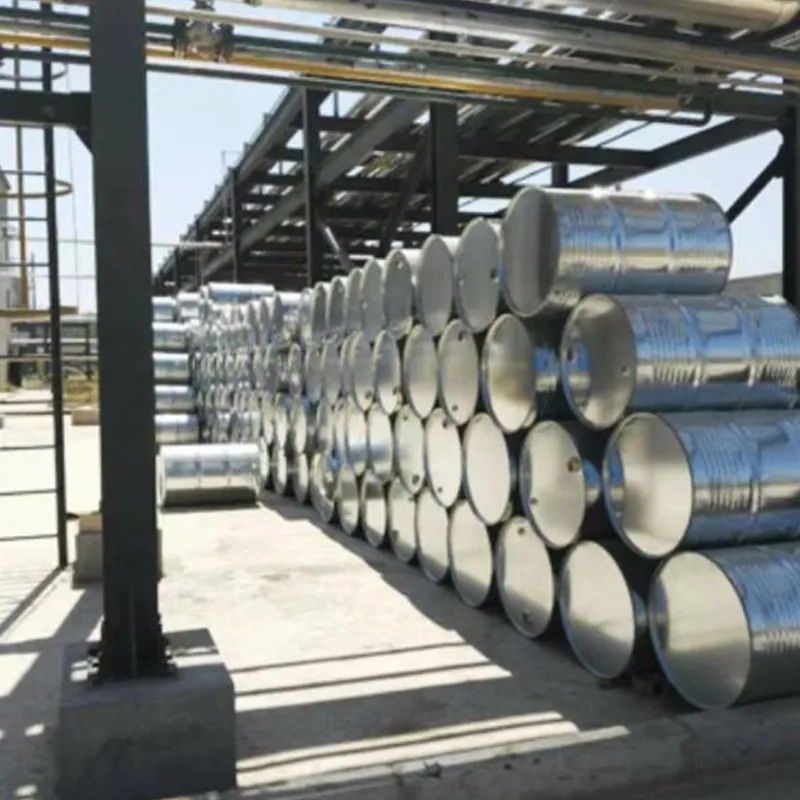
types of inorganic fertilizers
Understanding Types of Inorganic Fertilizers
Inorganic fertilizers, often referred to as synthetic or chemical fertilizers, are man-made substances that provide essential nutrients to plants. These fertilizers are widely used in agricultural practices due to their ability to deliver nutrients quickly and efficiently. Understanding the various types of inorganic fertilizers is crucial for farmers and gardeners alike to make informed choices that optimize plant growth and yield.
Nitrogen Fertilizers
One of the primary types of inorganic fertilizers is nitrogen fertilizers, which are critical for promoting healthy leaf and stem growth. Nitrogen is a key component of amino acids, proteins, and chlorophyll, making it essential for photosynthesis. Common forms of nitrogen fertilizers include
1. Urea (CO(NH2)2) Urea is one of the most concentrated nitrogen fertilizers, with a nitrogen content of about 46%. It is often used due to its high efficiency and low cost, but it needs to be converted to ammonium in the soil before plants can use it.
2. Ammonium Nitrate (NH4NO3) This fertilizer provides both ammonium and nitrate, making it easily accessible to plants in different soil conditions. It has a nitrogen content of about 34%.
3. Ammonium Sulfate ((NH4)2SO4) This fertilizer not only supplies nitrogen but also sulfur, which is another essential nutrient for plants. It typically contains around 21% nitrogen.
Phosphorus Fertilizers
Phosphorus fertilizers are another key category, crucial for root development, flowering, and fruiting. Phosphorus is vital for energy transfer and storage in plants. Common phosphorus fertilizers include
1. Superphosphate This fertilizer is produced by treating phosphate rock with sulfuric acid. It typically contains 20% to 22% phosphorus. Superphosphate promotes vigorous root growth and is particularly useful during the early stages of plant development.
2. Triple Superphosphate (TSP) This variant contains a higher phosphorus concentration of approximately 44% to 48%. It is beneficial for direct application in the growing season when plants require a boost in phosphorus.
3. Monoammonium Phosphate (MAP) MAP (NH4H2PO4) is a highly soluble fertilizer that contains both nitrogen (about 11%) and phosphorus (about 48%). It is often used in starter fertilizers to enhance early plant growth.
types of inorganic fertilizers

Potassium Fertilizers
Potassium fertilizers are essential for overall plant health, influencing water regulation, enzyme activation, and stress resistance. Potassium plays a key role in photosynthesis and helps improve the quality of fruits and vegetables. Common types of potassium fertilizers include
1. Potassium Chloride (KCl) Also known as muriate of potash, this is the most widely used potassium fertilizer, containing around 60% to 62% potassium. It is often favored for its high potassium content and affordability.
2. Potassium Sulfate (K2SO4) This fertilizer provides potassium and sulfur, making it an excellent choice for crops sensitive to chloride. It contains about 50% potassium and is particularly beneficial for fruit and vegetable crops.
3. Potassium Nitrate (KNO3) This fertilizer provides both potassium and nitrogen, making it suitable for promoting fruit development and improving flavor. It contains approximately 44% potassium and 13% nitrogen.
Specialty Inorganic Fertilizers
In addition to the primary macronutrients, there are specialty inorganic fertilizers designed to cater to specific crops or growing conditions. These may include trace elements and micronutrients, essential for plant health. Examples include
1. Chelated Micronutrient Fertilizers These fertilizers supply vital trace elements such as iron, manganese, zinc, and copper in a form that is easily taken up by plants.
2. Controlled-Release Fertilizers These are formulated to release nutrients gradually over time, reducing the risk of nutrient runoff and minimizing the number of applications needed.
Conclusion
Understanding the types of inorganic fertilizers is essential for optimizing plant growth and maximizing yield. Each type serves specific plant needs and growth stages, ensuring that crops receive the nutrients necessary for healthy development. By selecting the appropriate fertilizer types and applying them effectively, farmers and gardeners can foster thriving plants and sustainable agricultural practices. Whether it’s nitrogen for leafy greens, phosphorus for robustroot systems, or potassium for fruit quality, there’s no one-size-fits-all solution; rather, it’s about matching the right fertilizer to the right need.
-
The Safety Challenges of Ammonium Nitrate FertilizerNewsJun.26,2025
-
The Critical Role of Mining ChemicalsNewsJun.26,2025
-
Shelf Life of Glacial Acetic Acid Food GradeNewsJun.26,2025
-
Enhancing PVC Longevity with 1,2,3-Benzotriazole InnovationsNewsJun.26,2025
-
China’s Dominance in Food Additive ProductionNewsJun.26,2025
-
Can Aluminum Hydroxide Replace More Toxic Alternatives?NewsJun.26,2025
-
PE and PP Plastics with Benzotriazole AdditivesNewsJun.12,2025
Hebei Tenger Chemical Technology Co., Ltd. focuses on the chemical industry and is committed to the export service of chemical raw materials.
-

view more DiethanolisopropanolamineIn the ever-growing field of chemical solutions, diethanolisopropanolamine (DEIPA) stands out as a versatile and important compound. Due to its unique chemical structure and properties, DEIPA is of interest to various industries including construction, personal care, and agriculture. -

view more TriisopropanolamineTriisopropanolamine (TIPA) alkanol amine substance, is a kind of alcohol amine compound with amino and alcohol hydroxyl, and because of its molecules contains both amino and hydroxyl. -

view more Tetramethyl Thiuram DisulfideTetramethyl thiuram disulfide, also known as TMTD, is a white to light-yellow powder with a distinct sulfur-like odor. It is soluble in organic solvents such as benzene, acetone, and ethyl acetate, making it highly versatile for use in different formulations. TMTD is known for its excellent vulcanization acceleration properties, which makes it a key ingredient in the production of rubber products. Additionally, it acts as an effective fungicide and bactericide, making it valuable in agricultural applications. Its high purity and stability ensure consistent performance, making it a preferred choice for manufacturers across various industries.











